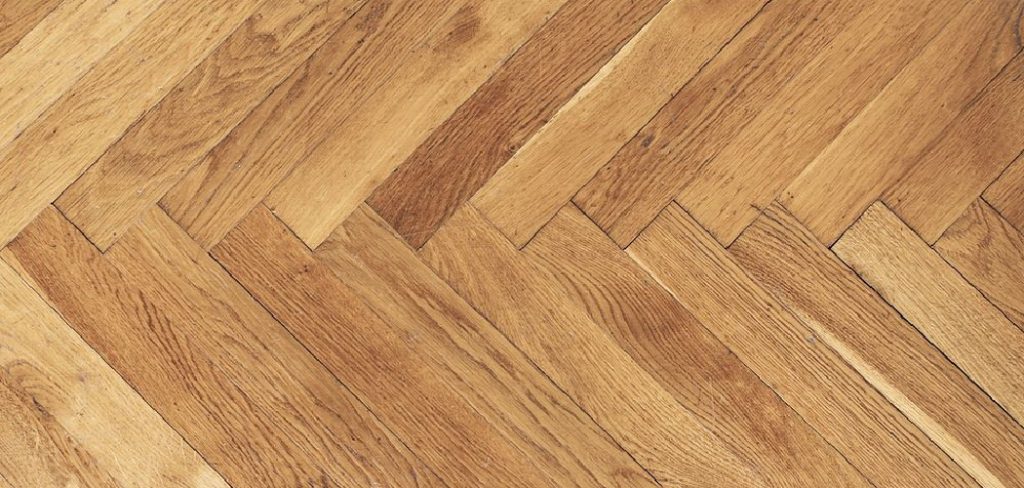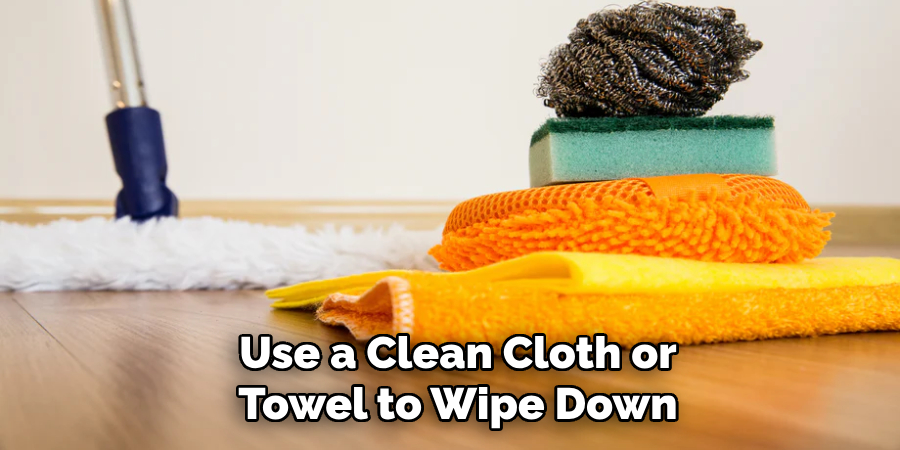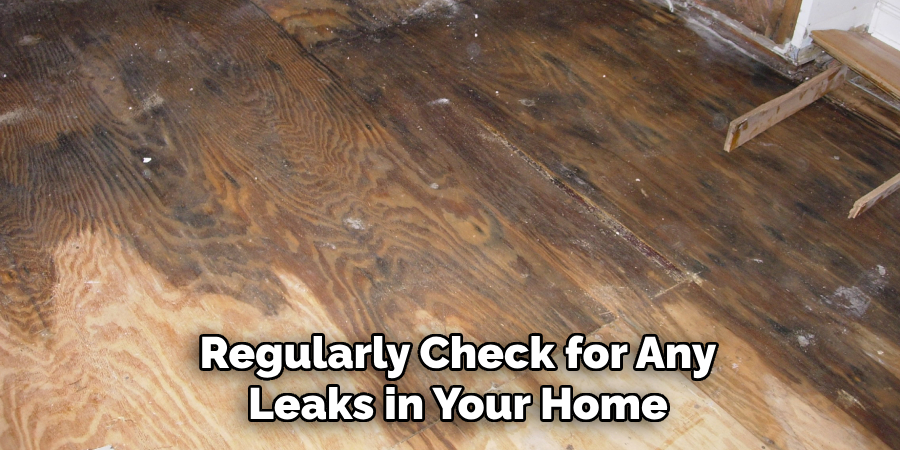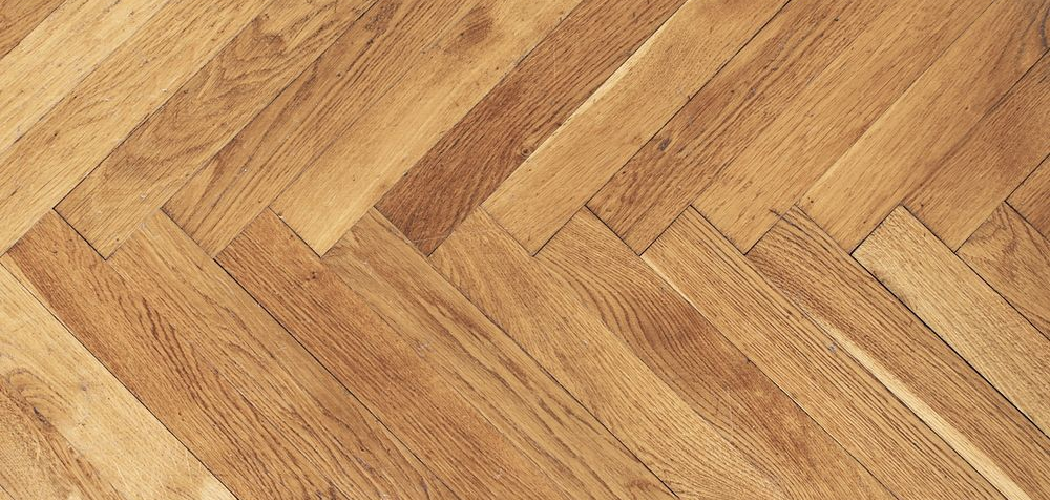Laminate wood flooring is a popular choice for many homeowners due to its affordability, durability, and aesthetic appeal. However, like any other type of flooring, laminate wood can be susceptible to water damage if not properly maintained or exposed to excessive moisture. When this happens, it’s important to know to dry out laminate wood flooring as quickly and effectively as possible.

The main advantage of knowing to dry out laminate wood flooring is to prevent further damage and costly repairs. Water can seep into the layers of laminate, causing it to warp, buckle, or even peel off. This not only affects the appearance of your flooring but also compromises its structural integrity. Read this blog post to learn how to dry out laminate wood flooring.
Step by Step Processes for How to Dry Out Laminate Wood Flooring
Step 1: Inspect the Damage
Begin by inspecting the damaged area to determine the extent of water damage. Look for discoloration, warping, and swelling in the flooring. If you see any signs of damage, it is important to act quickly to prevent further damage.
Step 2: Remove Standing Water
If there is standing water on your laminate wood flooring, use a wet/dry vacuum or mop to remove it. Be sure to dry the surface completely afterwards. Set up fans and dehumidifiers in the affected area to help circulate air and speed up the drying process. Make sure to keep windows and doors open for better ventilation.
Step 3: Wipe Down Surfaces
Use a clean cloth or towel to wipe down any remaining moisture on the surface of the flooring. This will help prevent mold and mildew from growing. If your laminate wood flooring is installed with baseboards, remove them carefully to allow air to circulate and dry out the subflooring.

Step 4: Check Underneath the Flooring
If possible, check underneath the flooring for any signs of moisture or damage. If you find any, use a wet/dry vacuum to remove it. A moisture meter can be used to determine the level of moisture in the laminate wood flooring. This will help you monitor the progress and know when the flooring is completely dry.
Step 5: Replace Damaged Flooring
If there are any severely damaged or warped laminate wood planks, they may need to be replaced. Use a circular saw to carefully cut and remove the affected planks and replace them with new ones. Depending on the amount of water damage, it may take several days for the laminate wood flooring to completely dry out. Be patient and allow ample drying time before walking on or replacing furniture on the floor.
After the flooring is completely dry, clean and disinfect the area with a mild detergent or specialized cleaner for laminate wood flooring. This will remove any remaining bacteria or mold spores.
Tips for How to Dry Out Laminate Wood Flooring
- Turn off all electrical power before starting the drying process to avoid potential hazards.
- Wear protective gear, such as gloves and goggles, when handling wet flooring to prevent any harmful substances from coming into contact with your skin or eyes.
- Use fans and open windows for proper ventilation to help with the drying process and prevent mold growth.
- Do not attempt to use a hair dryer or other heating device to speed up the drying process, as this can cause damage to the laminate flooring.
- Use dehumidifiers in the affected area to help remove excess moisture from the air and aid in drying out the flooring.
- Be cautious when walking on wet laminate flooring, as it may be slippery and could result in injury.
- If the damage is extensive, it may be best to consult a professional for assistance with drying out the laminate flooring.

What Causes Laminate Wood Flooring to Become Wet?
Laminate wood flooring is a popular choice for many homeowners due to its affordability, durability, and easy maintenance. However, just like any other type of flooring, it is susceptible to moisture and can become wet under certain circumstances. There are several reasons why laminate wood flooring may become wet:
- Spills or leaks – Accidental spills from liquids such as water, juice, or even pet urine can seep into the laminate wood flooring and cause it to become wet.
- High humidity levels – Excessive moisture in the air can also make laminate wood flooring damp. This is especially common in areas with high humidity, such as basements or bathrooms.
- Flooding – If your home experiences a flood due to natural disasters or plumbing issues, it can cause your laminate wood flooring to become completely soaked.
- Poor installation – Improper installation can leave gaps or spaces between the planks of laminate wood flooring, allowing moisture to seep in and make the flooring wet.
- Plumbing leaks – Leaks from pipes under or near the flooring can also lead to wet laminate wood flooring.
How Long Does It Take for Laminate Wood Flooring to Dry Out?
Laminate wood flooring is a popular choice for households and commercial spaces due to its durability, affordability, and easy maintenance. However, accidents can happen that require immediate attention, such as spills or water leaks. When exposed to moisture, laminate flooring can become damaged if not dried out properly. Many people wonder how long it takes for laminate wood flooring to dry out after exposure to water.
The answer depends on several factors, such as the extent of water damage, the type of laminate flooring, and the method used to dry it out. In general, it can take anywhere from a few days to a couple of weeks for laminate wood flooring to completely dry out. But before we delve into the specifics, let’s discuss why drying out laminate flooring is crucial and the steps you can take to speed up the drying process.
How Can You Prevent Mold and Mildew From Growing on My Laminate Wood Flooring?
If you have recently experienced water damage to your laminate wood flooring, it is important to properly dry it out in order to prevent mold and mildew from growing. However, even after drying out the flooring, there are still steps you can take to further protect against mold and mildew growth. Here are some tips for preventing mold and mildew on dried out laminate wood flooring:
- Keep the flooring dry: The most effective way to prevent mold and mildew growth is to keep your laminate wood flooring dry. This means wiping up any spills or excess moisture immediately, as well as ensuring that the room has proper ventilation.
- Use a dehumidifier: If you live in an area with high humidity levels, using a dehumidifier can help to keep the air dry and prevent moisture from accumulating on your flooring.
- Use a mold and mildew resistant cleaner: When cleaning your laminate wood flooring, use a cleaner that is specifically designed to prevent mold and mildew growth. This will help to further protect against any potential growth.
- Apply a waterproof sealant: Consider applying a waterproof sealant to your dried out laminate wood flooring. This will help to prevent any future water damage and make the flooring easier to clean.
- Regularly inspect for leaks: To prevent unexpected water damage, be sure to regularly check for any leaks in your home that could potentially affect your laminate wood flooring. These could include leaky pipes or a leaking roof.

Overall, it is important to take steps to properly dry out your laminate wood flooring after water damage and to continue to maintain a dry environment in order to prevent mold and mildew growth. By following these tips, you can help to keep your flooring looking great and avoid any potential health hazards associated with mold and mildew.
How Often Should You Check on the Progress of Drying Out Your Laminate Wood Flooring?
The timeline for drying out laminate wood flooring will vary depending on the extent of water damage and the environmental conditions. It is recommended to check on the progress of drying out your flooring at least once a day, or more frequently if possible. This will allow you to monitor any changes in moisture levels and make adjustments as needed.
Additionally, make sure to follow any specific guidelines provided by professionals or manufacturers for the drying process. Remember, proper and timely drying is crucial in preventing mold and mildew growth on your laminate wood flooring. So be sure to stay diligent in checking on its progress until it is completely dried out.
Are There Any Long-term Effects on Laminate Wood Flooring That Has Been Dried Out?
Laminate wood flooring is a popular choice for many homeowners due to its durability, affordability and easy maintenance. However, just like any other type of flooring, laminate wood can also be damaged by water. Whether it’s caused by a burst pipe, flooding or even spilled liquids, water damage on laminate wood flooring should be addressed immediately.
One of the main concerns when dealing with water damage on laminate wood flooring is ensuring that it dries out properly. Failure to do so can lead to a number of issues, such as warping, buckling and even mold growth. In this guide, we will discuss how to properly dry out laminate wood flooring after a water damage incident.
How Does Water Damage Affect Laminate Wood Flooring?
Before diving into the drying process, it’s important to understand how water can damage laminate wood flooring. Laminate wood flooring is made up of layers of compressed materials, typically topped with a high-density fiberboard (HDF) or medium-density fiberboard (MDF) core and a decorative layer on top. These materials are not water-resistant, meaning that they can soak up moisture if exposed to it for an extended period of time.
When water seeps into the layers of laminate wood flooring, it can cause them to expand, warp or buckle. This is because the compressed materials absorb the water and then swell, putting pressure on the flooring’s joints. Additionally, if the water is not removed promptly, it can lead to mold growth which can cause health hazards and further damage to the flooring.
Conclusion
In conclusion, knowing to dry out laminate wood flooring is essential for any homeowner. It can help prevent further damage and save you money in the long run. However, there are some disadvantages to consider when attempting to dry out your laminate wood flooring.
The first disadvantage is the potential for permanent damage if not done correctly. As mentioned earlier, excess water can cause warping and buckling of the laminate planks. This can result in an uneven and unsightly floor, which may require replacement. I hope this article has been beneficial for learning how to dry out laminate wood flooring. Make Sure the precautionary measures are followed chronologically.
